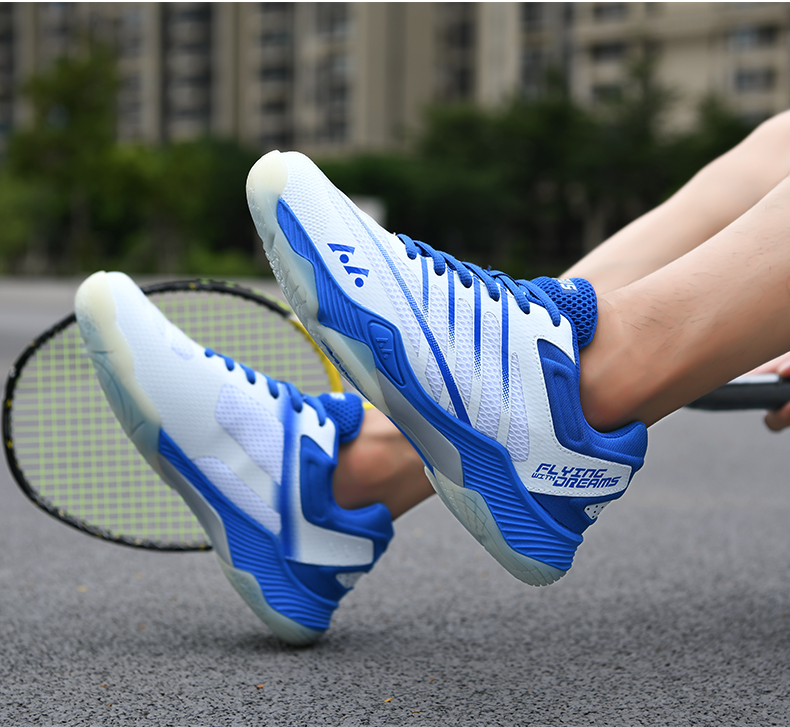
When it comes to playing pickleball, having the right footwear is essential for optimal performance and safety. One crucial aspect of pickleball shoes to consider is the type of sole they have. The sole determines the traction, grip, and overall stability on the court. In this article, we will explore different sole types for pickleball shoes and help you determine which is best for your game.
- Gum Rubber Sole Gum rubber soles are a popular choice for pickleball shoes. They offer excellent traction and grip on indoor courts, including wood, laminate, or tile surfaces. The soft and sticky nature of gum rubber allows players to make quick lateral movements without slipping. It provides stability and helps players maintain balance during sudden changes in direction.
- Non-Marking Sole Non-marking soles are a requirement for most pickleball courts, especially indoor facilities. These soles are designed not to leave scuff marks or damage the court surface. Non-marking soles are typically made of gum rubber or other synthetic materials that won’t leave any visible marks on the court.
- Herringbone Tread Pattern The herringbone tread pattern is a common feature in pickleball shoe soles. It consists of zigzag lines that resemble the bones of a herring fish. This pattern offers excellent grip and stability, allowing players to make quick lateral movements and sudden stops without sliding. The herringbone tread pattern works well on both indoor and outdoor courts, providing reliable traction on various surfaces.
- Omni-Directional Tread Pattern Omni-directional tread patterns are designed for players who frequently switch between indoor and outdoor courts. These soles have a combination of herringbone and circular patterns, offering versatile traction for different court surfaces. Omni-directional soles provide grip and stability in all directions, allowing players to move confidently without worrying about slipping.
- Clay Court Sole For players who primarily play on outdoor clay courts, a specific clay court sole is recommended. These soles feature a unique pattern with deep, widely spaced treads. The design prevents clay from getting trapped in the sole, ensuring optimal traction and preventing slipping. Clay court soles are softer and more flexible than other types, allowing players to slide and pivot on the court with ease.
- Hard Court Sole If you predominantly play on outdoor hard courts, a hard court sole is the ideal choice. These soles are specifically designed to withstand the abrasive nature of hard surfaces like asphalt or concrete. Hard court soles often feature a durable rubber compound with a sturdy tread pattern that offers excellent traction and durability. They provide stability and protection against impact while ensuring maximum grip during quick movements.
- Indoor Court Sole For players who primarily play on indoor courts, an indoor court sole is recommended. These soles are designed to provide optimal grip and traction on smooth, flat surfaces such as wood or laminate. Indoor court soles typically feature a gum rubber compound that offers a sticky grip, allowing players to make quick movements without slipping. The sole’s design ensures stability and prevents skidding on indoor surfaces.
- Outdoor Court Sole If you frequently play on outdoor courts, an outdoor court sole is ideal. These soles are designed to withstand the challenges of outdoor play, including rougher surfaces, dirt, and varying weather conditions. Outdoor court soles often feature a durable rubber compound with a more aggressive tread pattern. The sturdy design provides enhanced traction and grip on outdoor surfaces, allowing players to move with confidence and stability.
Choosing the Right Sole for Your Game
When selecting pickleball shoes, consider the following factors to determine the right sole type for your game:
- Court Surface: Assess the type of courts you primarily play on—whether they are indoor, outdoor, clay, or hard courts. Each surface requires specific sole characteristics to optimize performance and prevent injuries.
- Playing Style: Consider your playing style and the type of movements you typically make on the court. If you rely on quick lateral movements and frequent changes in direction, prioritize soles with excellent grip and stability.
- Player Preference: Some players may have personal preferences when it comes to sole types. Try different soles to see which ones feel most comfortable and provide the desired level of traction and grip for your game.
- Durability: Take into account the durability of the sole. Soles made from high-quality rubber compounds tend to be more durable and can withstand the demands of regular pickleball play.
-
Budget: Consider your budget when choosing pickleball shoes. Different sole types and shoe models may vary in price, so find a balance between performance and affordability.
- Brand and Reviews: Research reputable pickleball shoe brands and read reviews from other players. Their feedback can provide insights into the performance and durability of different sole types.
Remember to try on different shoe models and walk around in them to assess comfort, fit, and overall feel. The right sole type should provide the necessary traction, grip, and stability to enhance your pickleball performance.